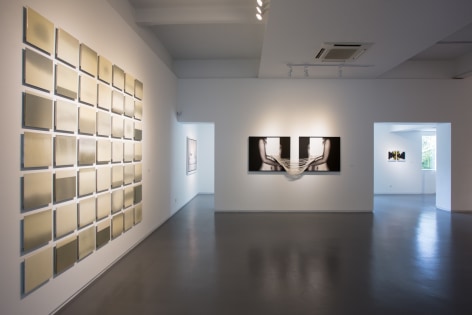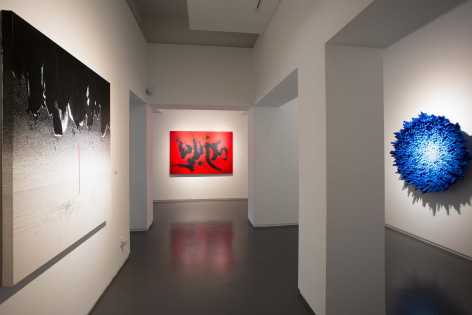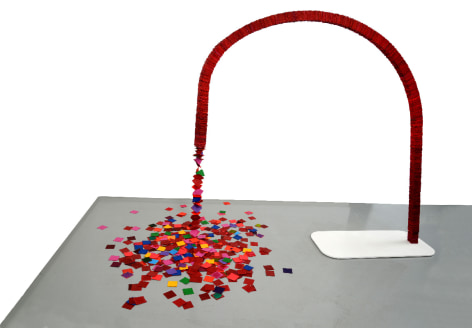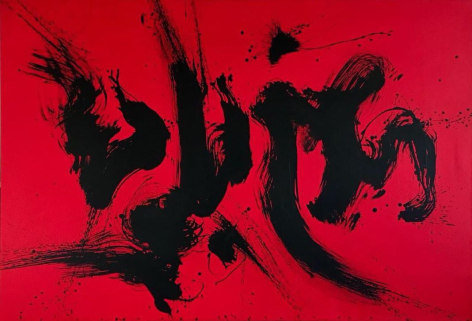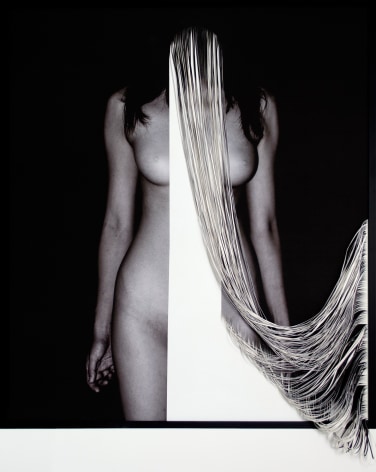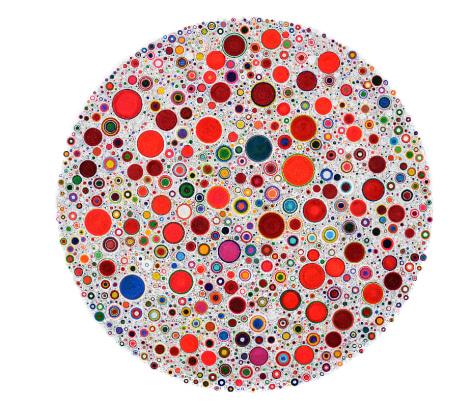Sundaram Tagore Singapore is pleased to present an exhibition that brings together the work of five innovative women from across Asia and the Middle East. Each of the featured artists employs a unique approach, challenging conventional norms through a diverse range of technique, medium and subject matter.
FEATURED ARTISTS:
Redefining established notions of what constitutes a painting, renowned Singaporean artist Jane Lee’s lush, abstracted works have garnered international acclaim and inclusion in exhibitions across the globe, including Red States, her recent, critically acclaimed solo show at the Hong Kong Arts Centre.
Operating in a post-colonial contemporary Southeast Asian context, Lee re-examines the significance of Western painting practices while asserting her own process and culture. For this show, Lee presents a selection of recent sculptural paintings and large-scale installations, including Stack Up 2, one of the standout works of Red States.
In her practice, Moroccan artist Lalla Essaydi explores issues of gender, cross-cultural identity and the prevalent myths of Orientalism. Working across multiple disciplines—including painting, video, installation and photography—Essaydi challenges the social mores and hierarchies that shaped her life as a young girl in Morocco.
For this show, images from three of Essaydi's most powerful photographic series, Les Femmes du Maroc, Harem and Harem Revisited, will be on view. The photographs present Moroccan women in a range of staged narratives that explore contemporary power structures, while also confronting conventional representations of Arab women, formed in part by Western perceptions of Islamic culture.
Miya Ando is a New York-based American artist known for her metal paintings that encapsulate both ephemerality and permanence. A descendant of Bizen sword makers, Miya Ando spent her childhood among Buddhist priests in a temple in Okayama, Japan, and later, in California. She combines the traditional techniques of her ancestry with modern industrial technology, skillfully transforming sheets of metal into ephemeral, abstract paintings suffused with color.
Ando’s work was recently on view alongside paintings and installations from Kandinsky, Motherwell, Frankenthaler and Warhol in True Colors, an exhibition at the Nassau County Museum of Art.
Based in Paris and Tehran, Iranian artist Golnaz Fathi produces sublime, abstract paintings rooted in the rich traditions of Persian calligraphy. Fathi is one of the few women in Iran to excel at traditional Islamic calligraphy, a largely male-dominated discipline.
Alongside her vibrant, acrylic on canvas paintings, Fathi presents a selection of expressionist drawings on paper that explore a medium long forbidden to her as a student of traditional calligraphy: the ballpoint pen. A complete departure from her calligraphic roots, these quivering, hatched lines sublimely coalesce into minimalist compositions hovering within expanses of negative space.
Bangkok-based artist Kamolpan Chotvichai addresses issues of identity and gender in photo-based self-portraits. Challenging the formal limitations of paper, she meticulously hand-cuts images of her body, creating sinuous ribbons along various parts of her anatomy. Based on an understanding of Buddhist teachings, Chotvichai obliterates her identity, eliminating her face and literally stripping away her physical form, in the process relinquishing attachment to her body. Through this process, she transforms two-dimensional photographs into three-dimensional sculpture-like works.


